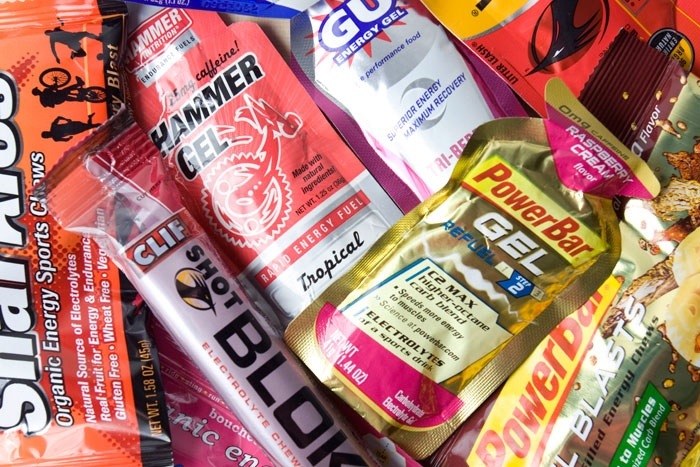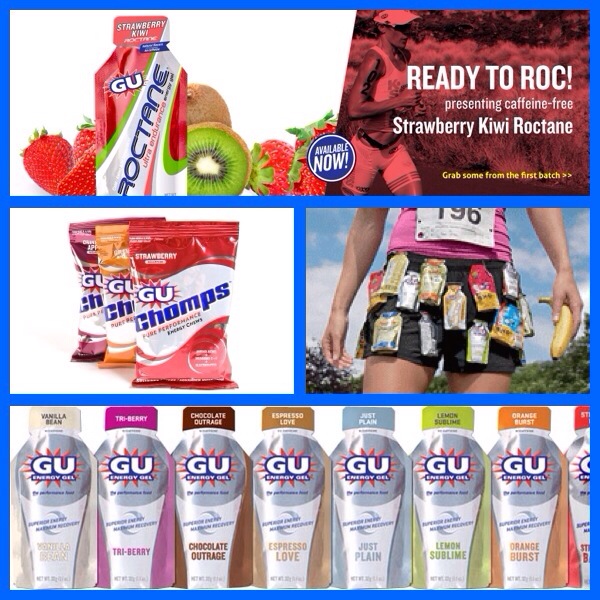Energy Gels: How marathon training with supplementation can reduce efficiency.
The majority of literature surrounding energy gels or goos tends to be regarding which brand or flavor to use, and at what point of training to ingest them. The real question is are they needed?
The whole idea of ingesting one of these supplements is to obtain energy through the source of glucose or carbohydrate. Our bodies are able to utilize its own glycogen stores for a given period of time during exercise which can be up to 2 hours before it starts to run out and become dependent on external sources or muscle. This is the point commonly referred to as bonking.
The key to endurance training in preparation for a marathon is to teach the body to become efficient and not rely on supplementation. In other words burn fat instead of glycogen. During base training and on long slow runs, if we train at an aerobic rate (slower rate which avoids lactate threshold) we train our body to utilize fat for energy. Fat storage in the body is pretty much unlimited and can sustain a runner through an entire 18-20 mile run during training periods. When training with energy gels, the body becomes dependent on this external synthetic source of energy reducing its ability to become efficient. Instead of running harder and ingesting energy gels during a training run, slow down and become efficient at burning fat.
What about during a race? The philosophy differs as we are now pushing our body and will be utilizing more glycogen. If it takes us longer then 2 hours to complete a marathon (which is pretty much most of us!) then using energy gels or goos as a supplementation can help. Fat will still be the primary source of fuel during a marathon, but given that it is a race and we are pushing the limits we will utilize glycogen. If we start the race too hard and utilize all of our glycogen, then the second half will become very challenging forcing the body to slow down. If we conserve however, and rely on our fat burning more efficient engine, as we enter the second half (and even more so the last 6.2) we will have enough glycogen at hand to finish stronger. For an energy gel to be useful it should probably be consumed closer toward the end of the race to put some extra glucose on hand for the last several miles when you may want to pick it up.
If you are used to training with energy gels on long runs and become hungry when trying to run without them, you are most likely training too hard and depleting your glycogen stores instead of burning fat. Slowing down on your long runs will certainly help this. Also, eating a banana, a bagel, or drinking a glass of juice can be enough to reduce the “empty stomach” feeling that is present if you run in the AM. Remember, what we have eaten the week leading up to a long run is far more important then “carb loading” the night before.
So don’t expect to get faster by swallowing several gels down to get added energy. Speed will come from an efficiently built engine.








I had to chuckle..I think there is a spell check typo. Eating a bandana would definitely reduce the empty stomach feeling! Thanks for the wonderful article. I am training for a marathon and then a stage race this year ( grand 2 grand). I do not eat sugar and eat paleo. Any suggestions for healthy sugar free gels? I realize that during my stage race pretty much everyday I will have to use gels especially since they are so packable. I am also researching a good pemmican from US wellness meats. I feel like my stomach may not tolerate such food though. Thank again!
I had to chuckle..I think there is a spell check typo. Eating a bandana would definitely reduce the empty stomach feeling! Thanks for the wonderful article. I am training for a marathon and then a stage race this year ( grand 2 grand). I do not eat sugar and eat paleo. Any suggestions for healthy sugar free gels? I realize that during my stage race pretty much everyday I will have to use gels especially since they are so packable. I am also researching a good pemmican from US wellness meats. I feel like my stomach may not tolerate such food though. Thank again!
I too eat low-carb/paleo, so I have trained my body to burn fat efficiently and I do not need any sugar or other supplements during a marathon. In longer trail races I eat what is offered in aid stations like fresh fruits and maybe carry nuts…
Another caveat about studies with supplementation is they are more likely than not done on athletes with either an empty stomach or have not eaten for a few hours. These athletes are also likely quite “dependent” on supplementation for peak performance during these studies.
As for my experience and thoughts on not supplementing during workouts. I generally run in a fasted state during all of my EZ workouts. However, for any key workouts where pace, speed, or distance are very important, I do supplement with some type of fruit before hand and possibly maltodextrin during.
In this scenario, getting the most out of the workout is far more important than teaching your body to burn fat more efficiently. This also helps you and your body become accustomed to supplementation while running at a high effort.
Another important thing to note is that hungry is a very bad indication of your body fuel levels. I would go as far as to say being hungry during a race is a good thing, since that means you are not eating too much!
Another caveat about studies with supplementation is they are more likely than not done on athletes with either an empty stomach or have not eaten for a few hours. These athletes are also likely quite “dependent” on supplementation for peak performance during these studies.
As for my experience and thoughts on not supplementing during workouts. I generally run in a fasted state during all of my EZ workouts. However, for any key workouts where pace, speed, or distance are very important, I do supplement with some type of fruit before hand and possibly maltodextrin during.
In this scenario, getting the most out of the workout is far more important than teaching your body to burn fat more efficiently. This also helps you and your body become accustomed to supplementation while running at a high effort.
Another important thing to note is that hungry is a very bad indication of your body fuel levels. I would go as far as to say being hungry during a race is a good thing, since that means you are not eating too much!
Fabulous, what a webpage it is! This web site gives helpful facts to us,
keep it up.
Fabulous, what a webpage it is! This web site gives helpful facts to us,
keep it up.